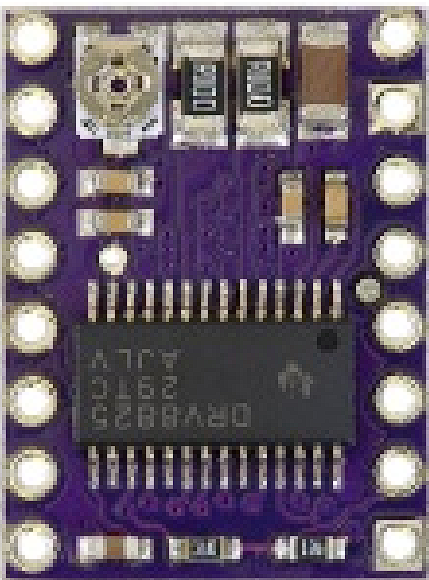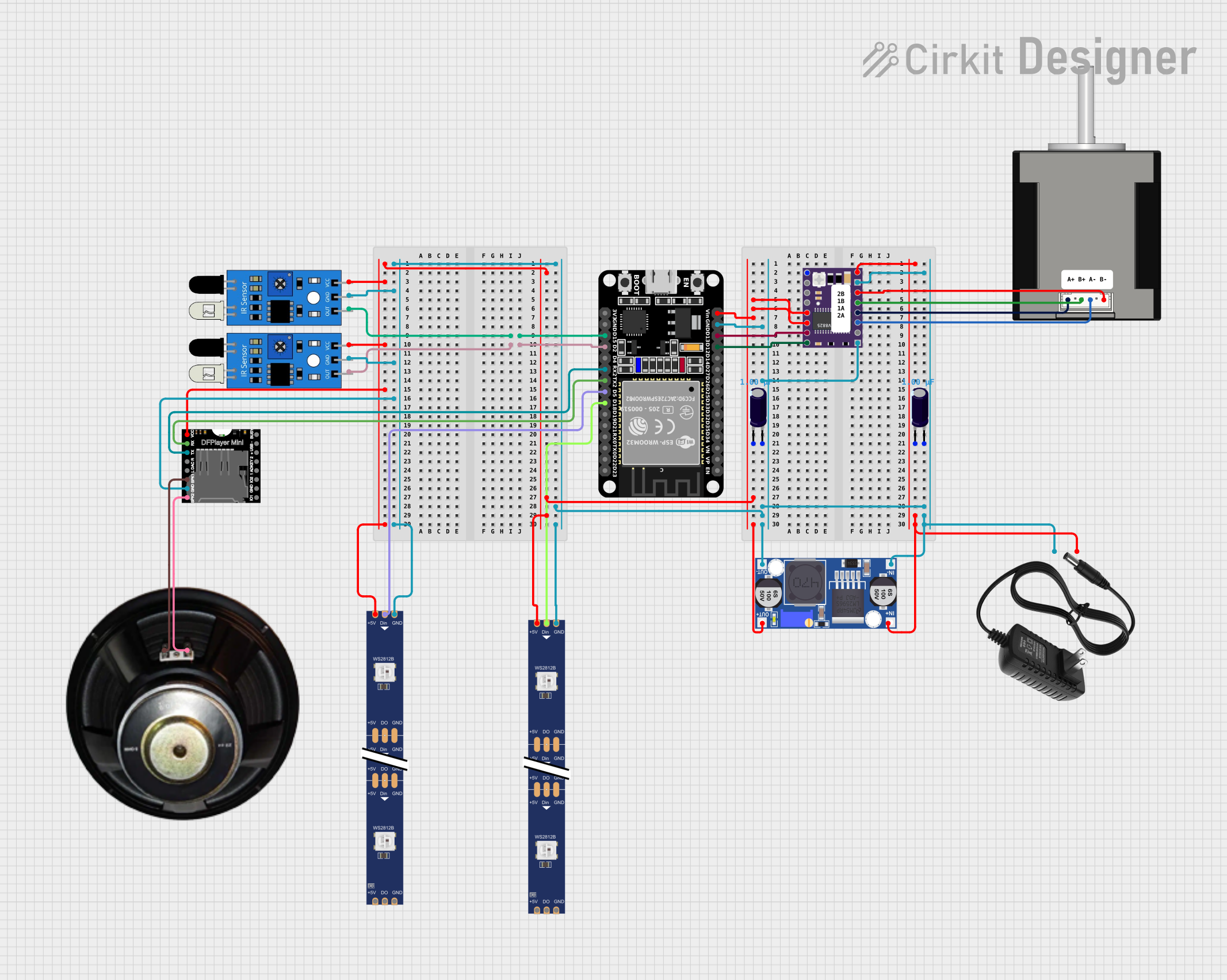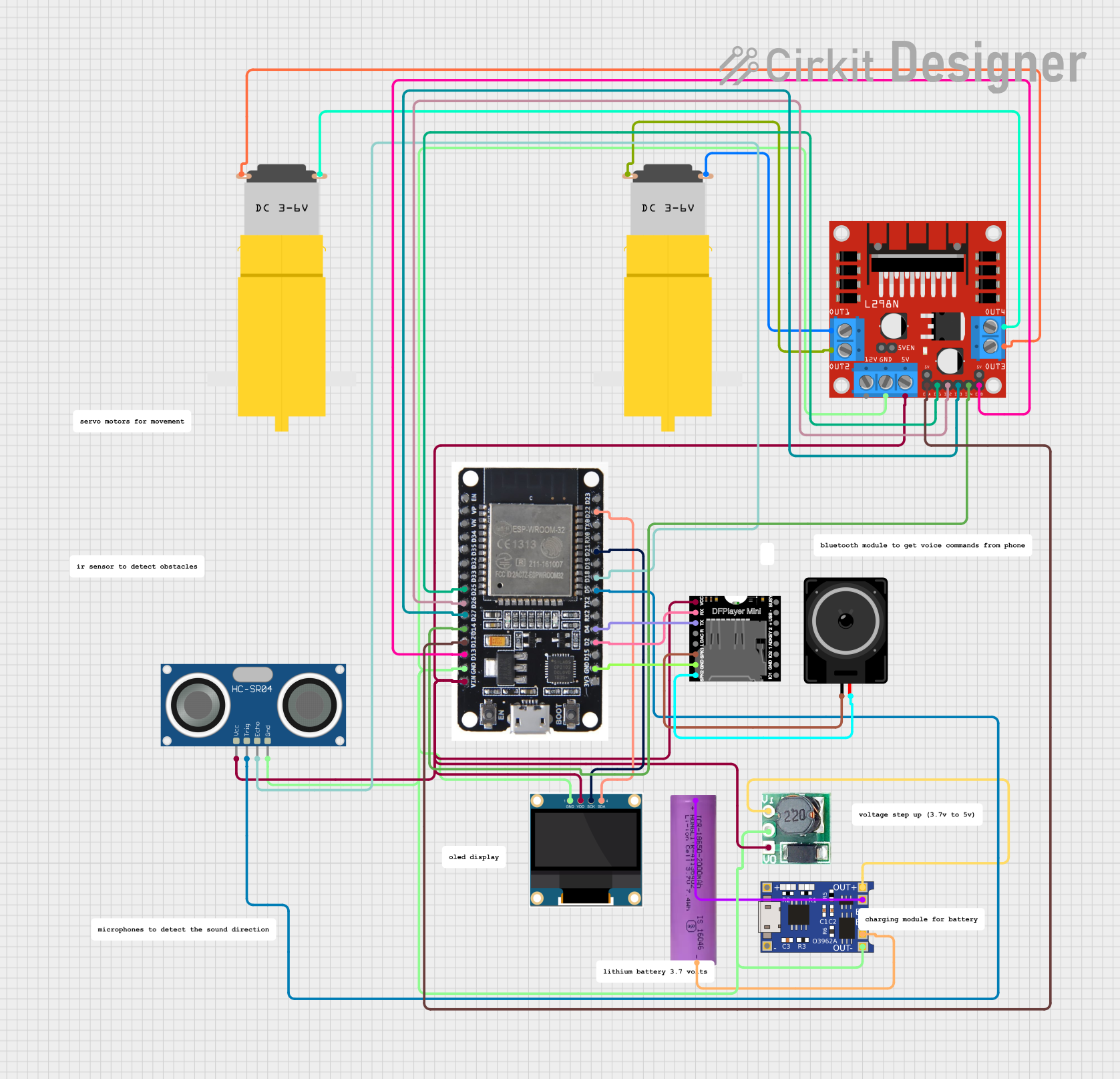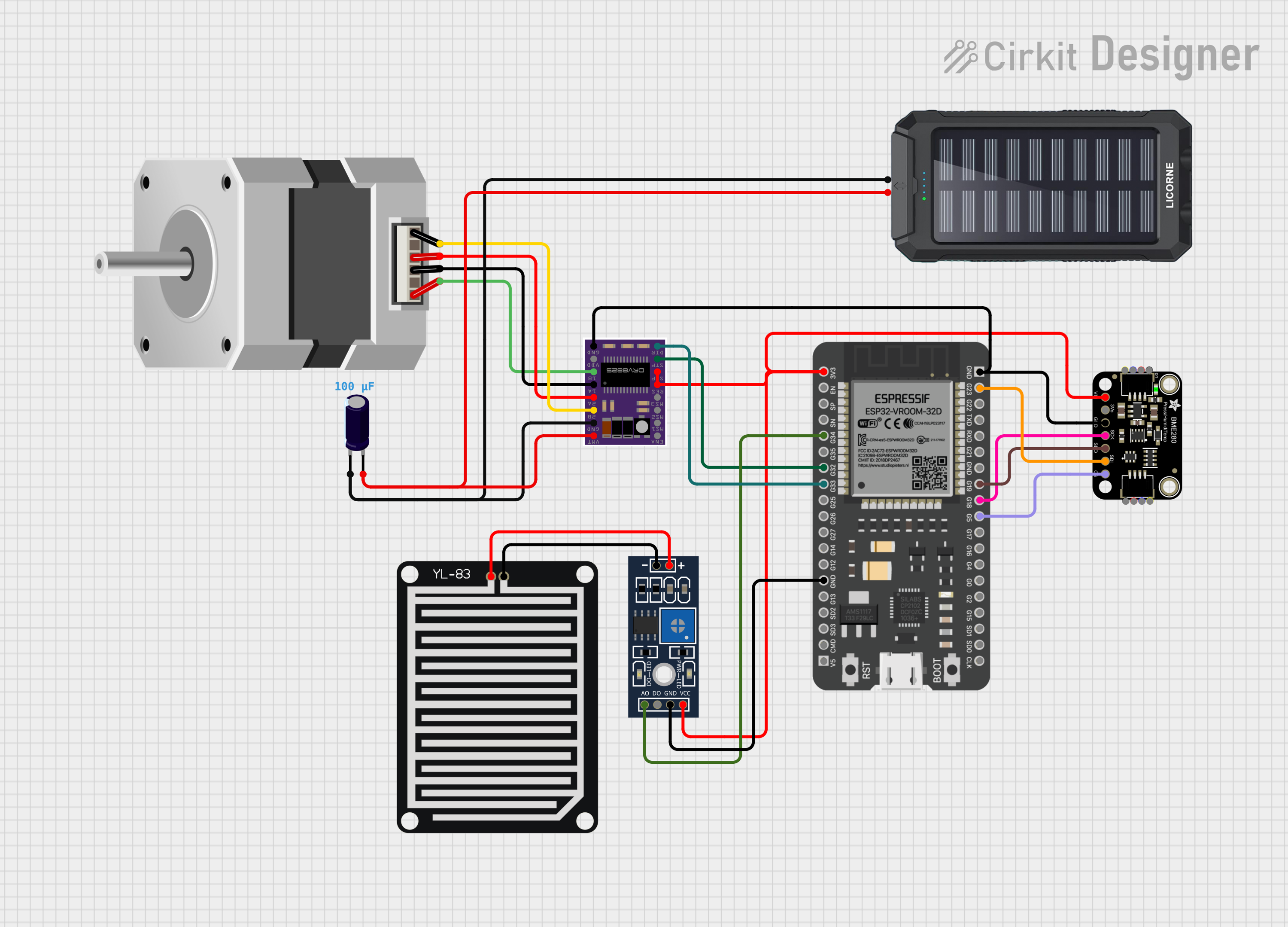
How to Use DRV8825: Examples, Pinouts, and Specs

 Design with DRV8825 in Cirkit Designer
Design with DRV8825 in Cirkit DesignerIntroduction
The DRV8825 is a high-performance stepper motor driver designed to control bipolar stepper motors with precision and efficiency. It supports microstepping, allowing for smoother and more accurate motor movements. With adjustable current control, over-temperature protection, and the ability to drive up to 2.5A per phase, the DRV8825 is a versatile component widely used in robotics, 3D printers, CNC machines, and other automation systems.
Explore Projects Built with DRV8825

 Open Project in Cirkit Designer
Open Project in Cirkit Designer
 Open Project in Cirkit Designer
Open Project in Cirkit Designer
 Open Project in Cirkit Designer
Open Project in Cirkit Designer
 Open Project in Cirkit Designer
Open Project in Cirkit DesignerExplore Projects Built with DRV8825

 Open Project in Cirkit Designer
Open Project in Cirkit Designer
 Open Project in Cirkit Designer
Open Project in Cirkit Designer
 Open Project in Cirkit Designer
Open Project in Cirkit Designer
 Open Project in Cirkit Designer
Open Project in Cirkit DesignerCommon Applications:
- Robotics and automation systems
- 3D printers
- CNC machines
- Camera sliders and gimbals
- Precision positioning systems
Technical Specifications
Key Technical Details:
- Motor Type Supported: Bipolar stepper motors
- Operating Voltage: 8.2V to 45V
- Maximum Current per Phase: 2.5A (with sufficient cooling)
- Microstepping Modes: Full-step, 1/2, 1/4, 1/8, 1/16, 1/32
- Logic Voltage: 3.3V or 5V
- Over-Temperature Protection: Yes
- Over-Current Protection: Yes
- Adjustable Current Control: Yes (via potentiometer)
- Step Frequency: Up to 250 kHz
Pin Configuration and Descriptions:
The DRV8825 module typically has 16 pins. Below is the pinout and description:
| Pin Name | Type | Description |
|---|---|---|
| VMOT | Power Input | Motor power supply (8.2V to 45V). Connect a capacitor close to this pin. |
| GND | Power Ground | Ground connection for motor power supply. |
| VDD | Power Input | Logic power supply (3.3V or 5V). |
| GND | Power Ground | Ground connection for logic power supply. |
| STEP | Input | Step signal input. Each pulse moves the motor one step. |
| DIR | Input | Direction control input. High or low determines motor rotation direction. |
| ENABLE | Input | Enable/disable the driver. Low = enabled, High = disabled. |
| MS1, MS2, MS3 | Input | Microstepping mode selection pins. |
| RESET | Input | Resets the driver when pulled low. |
| SLEEP | Input | Puts the driver into low-power sleep mode when pulled low. |
| FAULT | Output | Indicates fault conditions (e.g., over-temperature, over-current). |
| A1, A2 | Output | Connect to one coil of the stepper motor. |
| B1, B2 | Output | Connect to the other coil of the stepper motor. |
Microstepping Configuration:
The microstepping mode is configured using the MS1, MS2, and MS3 pins as shown below:
| MS1 | MS2 | MS3 | Microstepping Mode |
|---|---|---|---|
| Low | Low | Low | Full Step |
| High | Low | Low | 1/2 Step |
| Low | High | Low | 1/4 Step |
| High | High | Low | 1/8 Step |
| Low | Low | High | 1/16 Step |
| High | High | High | 1/32 Step |
Usage Instructions
How to Use the DRV8825 in a Circuit:
Power Connections:
- Connect VMOT to the motor power supply (8.2V to 45V) and GND to the power ground.
- Add a capacitor (e.g., 100 µF) close to the VMOT and GND pins to reduce voltage spikes.
- Connect VDD to the logic power supply (3.3V or 5V) and GND to the logic ground.
Motor Connections:
- Connect the stepper motor coils to A1, A2, B1, and B2. Ensure the correct pairing of motor wires.
Control Signals:
- Connect the STEP pin to a microcontroller or pulse generator to control the motor steps.
- Use the DIR pin to set the motor's rotation direction.
- Configure the microstepping mode using the MS1, MS2, and MS3 pins.
Adjusting Current Limit:
- Use the onboard potentiometer to set the current limit. This prevents overheating and protects the motor.
- Measure the reference voltage (VREF) on the potentiometer and calculate the current limit using the formula:
Current Limit = VREF × 2
Enable/Disable and Sleep Mode:
- Pull the ENABLE pin low to enable the driver or high to disable it.
- Pull the SLEEP pin low to put the driver into low-power mode.
Example: Connecting DRV8825 to Arduino UNO
Below is an example of how to control a stepper motor using the DRV8825 and Arduino UNO:
Circuit Connections:
- VMOT: Connect to a 12V power supply.
- GND: Connect to the power supply ground and Arduino GND.
- VDD: Connect to Arduino 5V.
- STEP: Connect to Arduino pin 3.
- DIR: Connect to Arduino pin 4.
- MS1, MS2, MS3: Set to desired microstepping mode (e.g., all LOW for full step).
- A1, A2, B1, B2: Connect to the stepper motor coils.
Arduino Code:
// Define pin connections
#define STEP_PIN 3 // Pin connected to STEP
#define DIR_PIN 4 // Pin connected to DIR
void setup() {
pinMode(STEP_PIN, OUTPUT); // Set STEP pin as output
pinMode(DIR_PIN, OUTPUT); // Set DIR pin as output
digitalWrite(DIR_PIN, HIGH); // Set initial direction (HIGH = clockwise)
}
void loop() {
// Generate a step pulse
digitalWrite(STEP_PIN, HIGH); // Set STEP pin HIGH
delayMicroseconds(500); // Wait for 500 microseconds
digitalWrite(STEP_PIN, LOW); // Set STEP pin LOW
delayMicroseconds(500); // Wait for 500 microseconds
}
Important Considerations:
- Always set the current limit before connecting the motor to avoid damage.
- Use a heatsink or cooling fan if driving motors at high currents.
- Ensure proper decoupling capacitors are used to prevent voltage spikes.
Troubleshooting and FAQs
Common Issues and Solutions:
Motor Not Moving:
- Check the power supply connections and ensure VMOT and VDD are properly powered.
- Verify the STEP signal is being sent to the driver.
Overheating:
- Ensure the current limit is set correctly using the potentiometer.
- Use a heatsink or cooling fan for high-current applications.
Fault Pin Active:
- Check for over-temperature or over-current conditions.
- Reduce the motor current or improve cooling.
Motor Vibrates but Does Not Rotate:
- Verify the motor coil connections (A1, A2, B1, B2) are correct.
- Check the microstepping configuration.
FAQs:
Q: Can I use the DRV8825 with a unipolar stepper motor?
A: No, the DRV8825 is designed for bipolar stepper motors only.Q: What is the maximum step frequency?
A: The DRV8825 supports step frequencies up to 250 kHz.Q: How do I calculate the current limit?
A: Measure the VREF voltage on the potentiometer and use the formula:
Current Limit = VREF × 2.Q: Can I use the DRV8825 with a 24V power supply?
A: Yes, the DRV8825 supports motor power supplies from 8.2V to 45V.